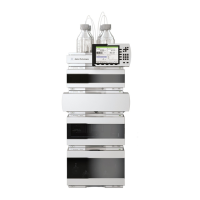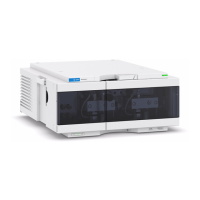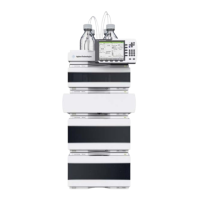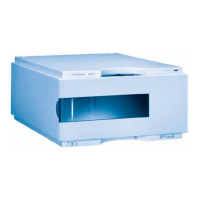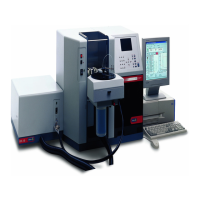1260 Infinity Binary Pump User Manual 61
Using the Pump
4
Hints for Successful Use of the Binary Pump
Hints for Successful Use of the Binary Pump
• Place solvent cabinet with the solvent bottles always on top (or at a
higher level) of the pump.
• When using the binary pump without vacuum degasser, shortly degas
your solvents by putting the solvent to a suitable container and
applying a vacuum pressure for some time. If possible apply solvent
conditions that will decrease the gas solubility over time (for example,
warming up the solvents).
• The use of a vacuum degasser is mandatory for flow rates below
0.5 mL/min and for configurations without damper and mixer.
• When using the binary pump with vacuum degasser, flush the degasser
with at least 5 mL per channel before operating the pump, especially
when the pumping system had been turned off for a certain length of
time (for example, overnight) and volatile solvent mixtures are used in
the channels (see “Regular Priming” on page 56).
• Prevent blocking of solvent inlet filters (never use the pump without
solvent inlet filters). Growth of algae should be avoided (see “Prevent
Blocking of Solvent Filters” on page 76).
• Check purge valve frit and column frit in regular time intervals. A
blocked purge valve frit can be identified by black, yellow or greenish
layers on its surface or by a pressure greater than 10 bar in low delay
volume configuration and 20 bar in standard configuration when
pumping distilled water at a rate of 5 mL/min with an open purge
valve.
• Whenever possible use a minimum flow rate of 5 µL/min per solvent
channel to avoid crossflow of solvent into the unused pump channel.
• Whenever exchanging the pump seals, the purge valve frit should be
exchanged, too.
• When using buffer solutions, flush the system with water before
switching it off. The seal wash option should be used when buffer
solutions with concentrations of 0.1 M or higher are being pumped for
long periods of time.
• Check the pump pistons for scratches, grooves and dents when
changing the piston seals. Damaged pistons cause micro leaks and will
decrease the lifetime of the seals.
• After changing the piston seals, apply the seal wear- in procedure (see
“Seal Wear- in Procedure” on page 169).
• Place the aqueous solvent on channel A and the organic solvent on
channel B. The default compressibility settings are set accordingly.
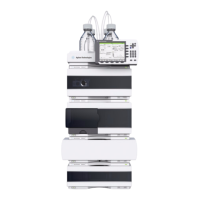
